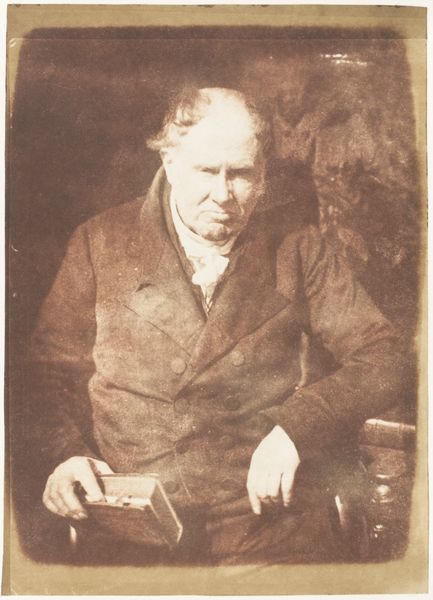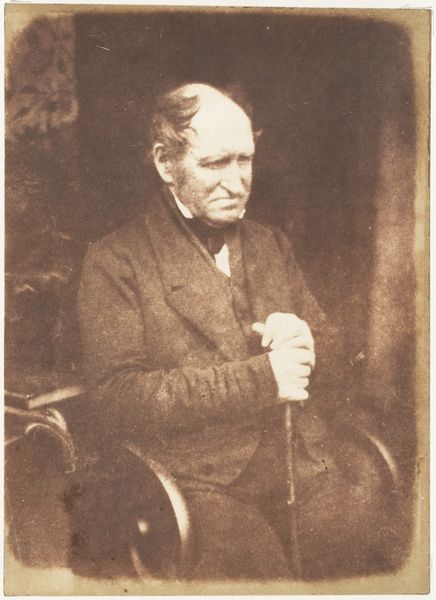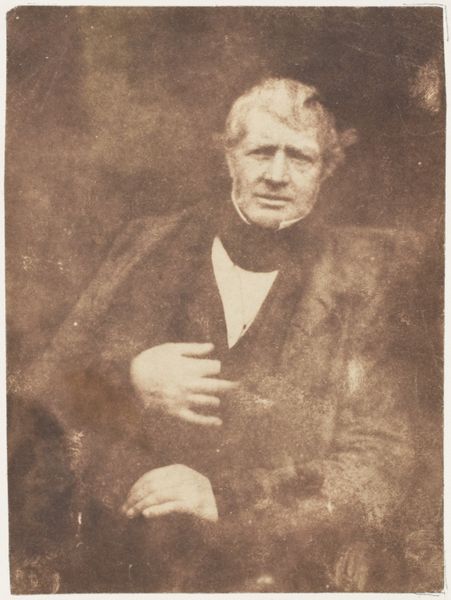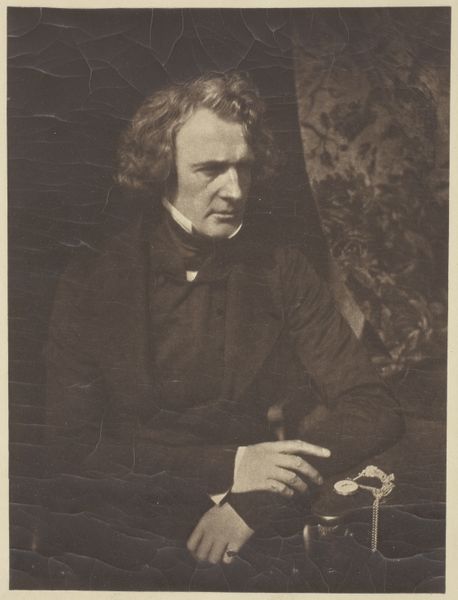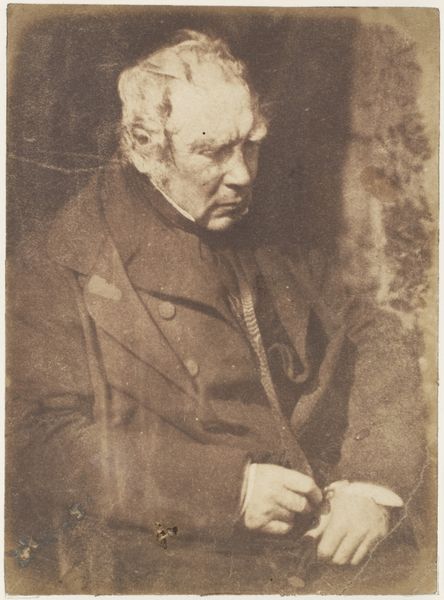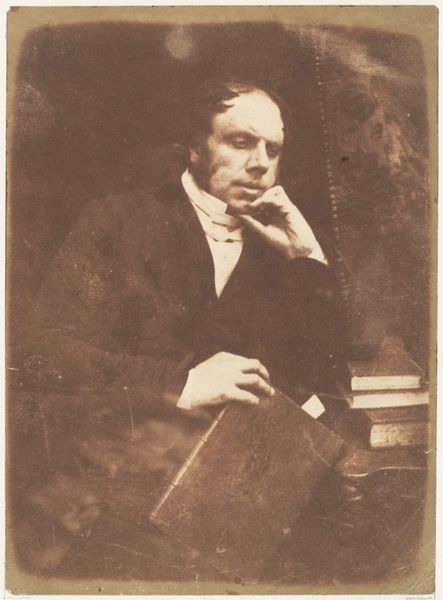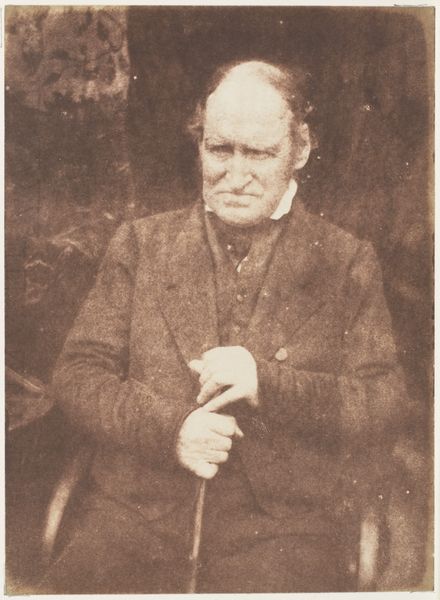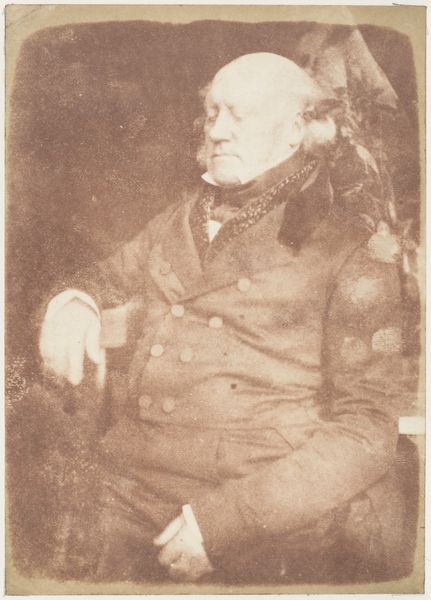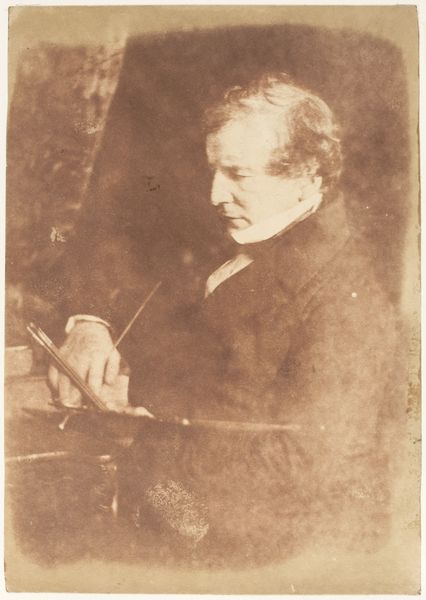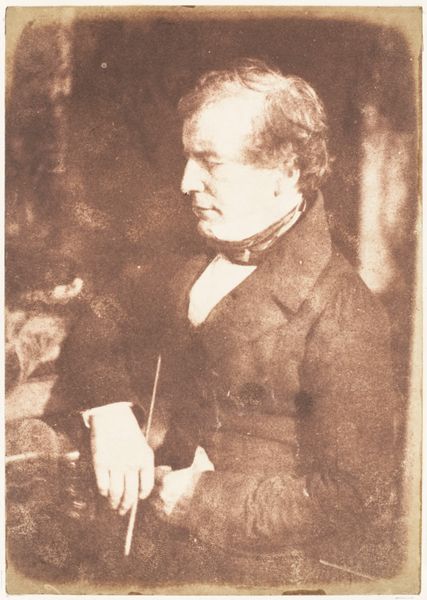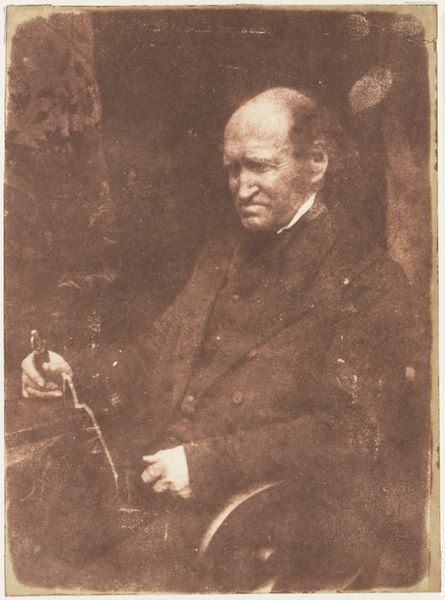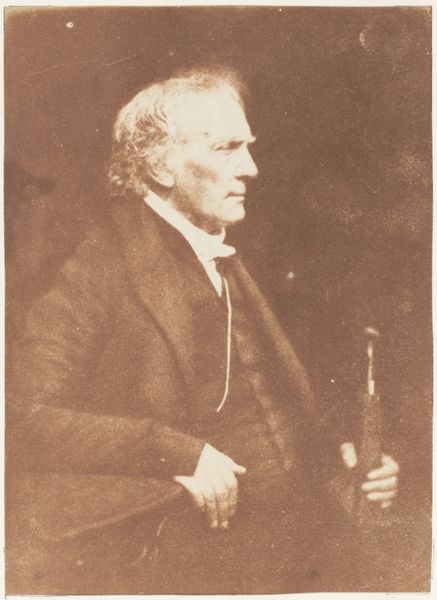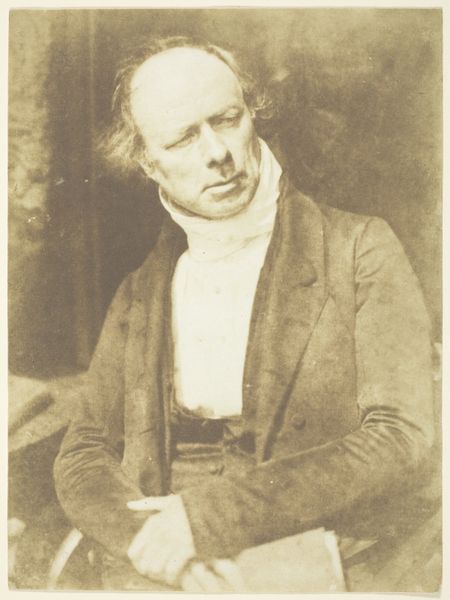
photogravure
#
photogravure
#
wedding photograph
#
photo restoration
#
low key portrait
#
portrait image
#
historical photography
#
portrait reference
#
portrait head and shoulder
#
single portrait
#
portrait drawing
#
celebrity portrait
Dimensions: 8 1/4 x 6 1/8 in. (20.96 x 15.56 cm) (image)
Copyright: No Copyright - United States
Editor: This photogravure, "Dr. Monro," from the 19th century by David Octavius Hill, has such a somber, introspective feel. It reminds me a bit of early crime scene photos or mugshots; his expression is captivating and I am drawn to understanding why Hill decided to photograph him. How do you interpret this work? Curator: Well, what strikes me is the visual weight assigned to the subject in relation to the power dynamics of the era. How does seeing this work through the lens of portraiture, given photography's budding role in solidifying societal hierarchies, alter our understanding of who gets remembered and how? Hill was active during a period of immense social upheaval; understanding that the elites held significant power helps in contextualizing the artwork. Editor: So you're saying we should consider the social implications inherent in portraiture at this time? What about Dr. Monro, is he a person of standing? Curator: Absolutely. Consider how the photogravure medium, though reproducible, still carries a certain gravitas. How does that affect the photograph as an object? His work, and by extension this piece, contributes to a broader conversation around identity and representation in art, inviting us to question the stories we tell about ourselves and each other. I'm thinking in terms of labor divisions. Does this portrait of Dr. Monro suggest anything about his class? How does his jacket appear - does it show that it has been produced in industrial lots or tailored privately? These factors speak to the means of production in the late 1800s. Editor: That’s fascinating! I hadn't thought about the labor divisions implied. Thanks for your thoughts about how portraiture is charged with class and historical power. Curator: And thank you. It’s rewarding to connect historical context with present-day perceptions.
Comments
No comments
Be the first to comment and join the conversation on the ultimate creative platform.
